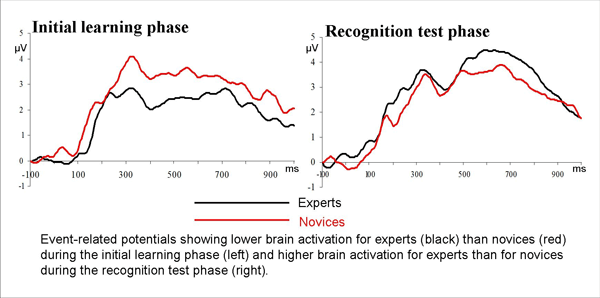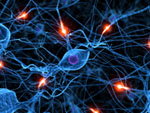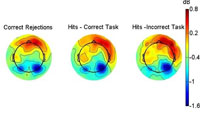 |
 |
 |
 TDLC Trainee Eva Pastalkova, Ph.D., Receives Prestigious Award TDLC Trainee Eva Pastalkova, Ph.D., Receives Prestigious Award
TDLC Trainee Eva Pastalkova has been recognized by The Society for Neuroscience (SfN), who awarded her The 2009 Peter and Patricia Gruber International Research Award in Neuroscience. The award recognizes young scientists who have exhibited ongoing international collaboration based on outstanding science. More
|
How Do We Learn
 How do we learn? This is a question with multiple, multifaceted answers. Indeed, the question underlies many TDLC research projects. And in cognitive science, it is often fruitful to focus not on the normal operation of a cognitive system, but rather its failure. Thus, one recently completed TDLC project centered on failure – specifically, why students fail to learn in educational settings. More How do we learn? This is a question with multiple, multifaceted answers. Indeed, the question underlies many TDLC research projects. And in cognitive science, it is often fruitful to focus not on the normal operation of a cognitive system, but rather its failure. Thus, one recently completed TDLC project centered on failure – specifically, why students fail to learn in educational settings. More 
|
|
Ah to be an Expert
Tim Curran, University of Colorado
 It is generally accepted that being an expert improves our perceptual processes and also changes how quickly and successfully we learn and remember objects associated with our expertise. However, until now no systematic study had been performed to investigate just how perceptual expertise facilitates memory. Click here to read more about this and other TDLC 2010 Highlights It is generally accepted that being an expert improves our perceptual processes and also changes how quickly and successfully we learn and remember objects associated with our expertise. However, until now no systematic study had been performed to investigate just how perceptual expertise facilitates memory. Click here to read more about this and other TDLC 2010 Highlights  |
|
Visual Pathways Fine Tuned over Time
Marlene Behrmann, Carnegie Mellon University
 In adolescents, activation in the ventral visual pathway for the category of “faces” appears at first glance to be adult-like; but, surprisingly, their recognition abilities for individual faces is actually still immature. Now TDLC researchers Marlene Behrmann, K. Suzanne Scherf, Beatriz Luna and Galia Avidan have investigated at the neural level the ability to represent individual faces and houses. In adolescents, activation in the ventral visual pathway for the category of “faces” appears at first glance to be adult-like; but, surprisingly, their recognition abilities for individual faces is actually still immature. Now TDLC researchers Marlene Behrmann, K. Suzanne Scherf, Beatriz Luna and Galia Avidan have investigated at the neural level the ability to represent individual faces and houses.
|
|
Our Rich Cognitive Abilities
Tim Curran, University of Colorado
 Cognitive neuroscience research often focuses on the functional role of specific brain regions. But of course performing the myriad of cognitive tasks that make us human actually requires interaction throughout our complex and dynamic neural networks. So a major question faced by cognitive neuroscientists is: How do the functionally specialized brain areas interact to perform rich cognitive abilities? TDLC Investigator Tim Curran and Graduate Student Erika Nyhus wrote a comprehensive review paper of episodic memory. Cognitive neuroscience research often focuses on the functional role of specific brain regions. But of course performing the myriad of cognitive tasks that make us human actually requires interaction throughout our complex and dynamic neural networks. So a major question faced by cognitive neuroscientists is: How do the functionally specialized brain areas interact to perform rich cognitive abilities? TDLC Investigator Tim Curran and Graduate Student Erika Nyhus wrote a comprehensive review paper of episodic memory. |
|
 |
Featured Scientist:
Paula Tallal,
TDLC Co-Director
Note: Response based on her experience as a licensed clinical psychologist
What is the connection between discipline, social-learning,
and neuro-functioning?
Discipline is highly related to self-control as well as self-esteem. There are really two factors we emphasize regarding discipline ... More 
|
|
This message was sent from:
The Temporal Dynamics of Learning Center (TDLC.UCSD.EDU)
University of California, San Diego,
9500 Gilman Drive, La Jolla, CA 92093
To learn more about TDLC, please visit us on the web at: TDLC.UCSD.EDU
Please contact webmaster@tdlc.ucsd.edu to unsubscribe.
TDLC is a Science of Learning Center (SLC),
one of six SLCs funded by the National Science Foundation. NSF grant #SBE-0542013 |
|
 |
|
 |

![]()
